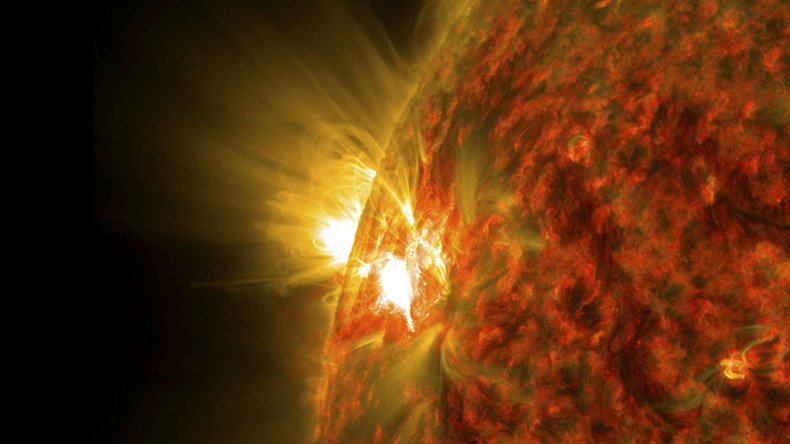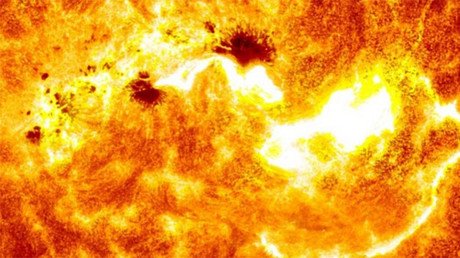Solar storm: How massive flare nearly caused WWIII

Believing its radars were being jammed, the US nearly launched a nuclear attack on the Soviet Union in 1967. Disaster was averted when military weather forecasters explained that the “jamming” was actually a massive solar flare, a new report reveals.
US Air Force officers who helped prevent a nuclear holocaust revealed the details of the drama for the first time in a report made public Wednesday by the American Geophysical Union. The paper is slated for publication in the AGU journal Space Weather later this year.
“Had it not been for the fact that we had invested very early on in solar and geomagnetic storm observations and forecasting, the impact [of the storm] likely would have been much greater,” said Delores Knipp, a space physicist at the University of Colorado in Boulder and lead author of the report, who presented the findings at the National Center for Atmospheric Research on Wednesday.
Solar flares, which are periodic eruptions of radiation from the sun’s atmosphere, can lead to electromagnetic disturbances on Earth, such as the disruption of radio signals and even power lines. A particularly powerful solar flare was spotted by observatories in New Mexico and Colorado in May 1967, while a radio observatory in Massachusetts recorded unprecedented levels of radio waves, according to the report.
The USAF’s Air Weather Service notified the North American Aerospace Defense Command (NORAD) on May 23 that a “significant worldwide geomagnetic storm” would hit within 36-48 hours. However, Air Force commanders put the US nuclear bombers on high alert when radars at three Ballistic Missile Early Warning System (BMEWS) sites in Alaska, Greenland and the UK reported being “jammed.”
Retired USAF Colonel Arnold L. Snyder, who was on duty at NORAD’s Solar Forecast Center, received an inquiry from headquarters about solar activity.
“Yes, half the sun has blown away,” Snyder recalled saying, after which he “related the event details in a calmer, more quantitative way.”
The three radar sites were on the daylight side of the Earth and were being disrupted by solar radiation, not the Soviets. As the solar storm passed, the “jamming” stopped as well, proving the forecasters correct.
The great solar storm of ’67 caused disruptions to US radio communications for almost a week, and was so powerful that it caused the northern lights to appear as far south as New Mexico, the report notes. The military took lessons from the storm and built up a stronger space weather forecasting system, Snyder said.
Revealed: US almost launched nuclear weapons during Cuban Missile Crisis https://t.co/mH2P4CGgUBpic.twitter.com/jMd3yhWh81
— RT America (@RT_America) October 28, 2015
There are multiple instances of nuclear war almost breaking out between the US and the Soviet Union during the Cold War – most notably twice during the 1962 Cuban Missile Crisis. As the Bulletin of the Atomic Scientists revealed in 2015, a US Air Force unit in Japan received launch codes by mistake on October 28, but refrained from launching the strike when the commanding officer questioned the orders. A day earlier, Soviet Navy commander Vasily Arkhipov refused to authorize the launch of a nuclear torpedo when his submarine B-59 found itself under attack by US destroyers near Cuba.













